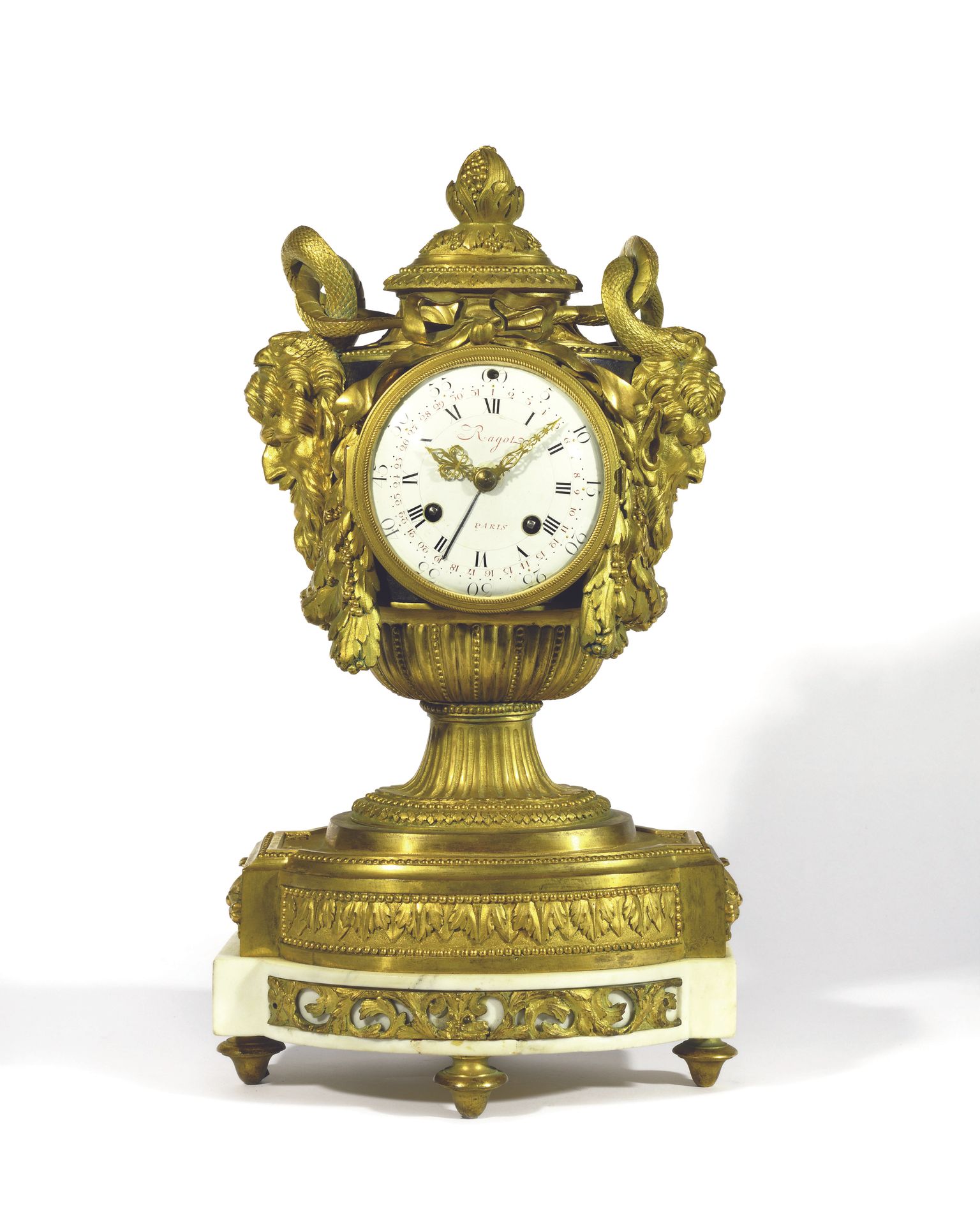Description
ROBERT OSMOND (1711-1789), after HANGER in the form of an antique urn, in chased, gilded and blue-patinated bronze. It stands on a fluted pedestal decorated with friezes of pearls and acanthus leaves. The handles are decorated with two heads of satyrs with snakes. Seed-shaped grip. The base is decorated with a pearl and acanthus leaf stripe, and stands on a white marble pedestal adorned with openwork interlacing. It stands on spinner feet. Enameled dial signed Ragot in Paris, with Arabic and Roman numerals. Transitional period. Height : 50 cm ; Width : 27 cm ; Depth : 17 cm (worn patina, oxidation)
289
ROBERT OSMOND (1711-1789), after HANGER in the form of an antique urn, in chased, gilded and blue-patinated bronze. It stands on a fluted pedestal decorated with friezes of pearls and acanthus leaves. The handles are decorated with two heads of satyrs with snakes. Seed-shaped grip. The base is decorated with a pearl and acanthus leaf stripe, and stands on a white marble pedestal adorned with openwork interlacing. It stands on spinner feet. Enameled dial signed Ragot in Paris, with Arabic and Roman numerals. Transitional period. Height : 50 cm ; Width : 27 cm ; Depth : 17 cm (worn patina, oxidation)
You may also like
